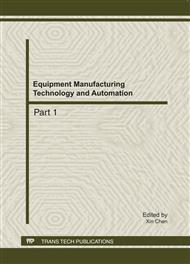p.174
p.179
p.185
p.189
p.194
p.201
p.207
p.211
p.215
The Study of the Preparation of Linolenic Acid-Amylose Complexes and their Oxidation Stability
Abstract:
Experimental study had been done to investigate the fatty acid (FA) content of the linolenic acid-amylose complexes which were prepared at different crystallization temperatures, holding time and amylase-linolenic acid ratio. The results showed the optimum conditions to make linolenic acid-amylose complexes were as followed: 80°C of crystallization temperature and 1.5h of the holding time,amylase-linolenic acid ratio of 9:1. Fatty acid composition of the complexes and physical mixtures before and after the heating destruction was detected by Gas chromatography-mass spectrometry (GC-MS). The results showed the complexes maintained higher oxidation stability than the physical mixtures.
Info:
Periodical:
Pages:
194-200
Citation:
Online since:
August 2011
Authors:
Price:
Сopyright:
© 2011 Trans Tech Publications Ltd. All Rights Reserved
Share:
Citation:


